The magnificent Cathedral of Notre-Dame de Paris is the most iconic structure rising at the point zero of France.
With its impressive towers, gargoyles, stained glass art and flying buttresses, the medieval Catholic Church is considered a masterpiece of gothic architecture, as well as a symbol of French identity and Catholicism.
Situated in Île de la Cité, the heart of the city, the majestic house of prayer is one of the top 5 things to do in Paris, attracting 14 million visitors a year.
On this page, you will find all the useful information about Notre-Dame de Paris Cathedral situation, latest news about the reopening after the terrible fire accident as well as history, facts, ticket & tour information...
Notre-Dame Cathedral Fire, Restoration & Reopening Timeline
After more than four years of intensive restoration following the devastating fire in April 2019, Notre-Dame Cathedral officially reopened to the public on December 8, 2024. The reopening was marked by a special mass and a week-long celebration, honoring the cathedral’s return as both a place of worship and one of Paris’s most iconic monuments.
Today, visitors can once again step inside the legendary cathedral to admire its Gothic architecture, rose windows, and restored nave and altar. The reopening marks a major milestone in French cultural history.
The Fire
On 15 April 2019, a devastating fire broke out beneath the roof of the cathedral, which nearly destroyed the 850-year-old landmark.
The iconic spire as well as the medieval roof structure collapsed, the high altar and other parts were damaged. Most of the valuable religious treasures inside Notre Dame were spared and rescued from the mammoth blaze.
More than 500 firefighters struggled for 15 hours to put the fire out.
After the Fire
French President Emmanuel Macron immediately addressed the shocked nation and promised that their bellowed monument would be repaired in time for the 2024 Olympics. Valuable treasures that were inside Notre Dame, such as the holy relics brought by crusaders, were brought to Louvre Museum. Just two days after the fire €600 million were donated to restore the cathedral. Today, the donations are estimated around €800 million.
The French national commission on architectural heritage compiled a report that Notre-Dame should be restored identical to its origin structure. This idea was favored by Macron and many others. After 15-month long discussions about how to restore the building, this proposal was finally accepted.
Start of Renovation
Following the fire of April 2019, French architect Philippe Villeneuve was appointed as the chief architect for the restoration of Notre-Dame.
The restoration effort faced multiple challenges, including hazardous lead contamination, the removal of 200 tons of melted scaffolding, and delays due to severe weather and the COVID-19 pandemic.
Despite these obstacles, the reconstruction officially began in 2021 and progressed rapidly thanks to the dedication of hundreds of skilled artisans, including stonemasons, carpenters, glassmakers, and ironworkers, many of whom were trained specifically for this project.
Reopening of Notre-Dame Cathedral
On December 8, 2024, Notre-Dame Cathedral officially reopened to the public, marking the end of one of the most significant restoration efforts in modern French history. The reopening was celebrated with a special mass, the consecration of the altar, and a week-long program of festivities from December 8 to 15.
The cathedral is now open for visitors and worshipers once again, with free entry to the interior and daily religious services. The restoration successfully preserved the Gothic soul of Notre-Dame while reinforcing its structure and carefully reviving its architectural and artistic details.
While the main structure is fully accessible, additional areas such as the towers are expected to reopen later in 2025.
What’s Open Now?
- The main interior of the cathedral is fully open.
- Liturgical services and masses are held daily.
- The square (parvis) in front of the cathedral remains accessible to all.
- The Archaeological Crypt, located beneath the cathedral square, offers an immersive look into ancient Roman ruins and the early foundations of Île de la Cité. (Open Tuesday to Sunday; Separate ticket required)
Note: The towers remain closed as of early 2025, but are expected to reopen later this year.
Opening Hours & Visitor Access
- Monday to Friday: 7:50 AM – 7:00 PM
- Extended hours on Thursdays until 10:00 PM
- Saturday and Sunday: 8:15 AM – 7:30 PM
- Last entry is 30 minutes before closing.
Admission is free, but due to high demand, booking a free timed-entry slot in advance is strongly recommended. >> Reserve Your Entry Time
Tickets, Guided Tours and Entrance
Entry to Notre-Dame Cathedral is free, as it is a place of worship. However, long waiting times are to be expected, particularly during the first few months following its reopening in December 2024. To reduce wait times, a free time-slot reservation system has been introduced. This system guarantees entry at your selected time and can be booked the day before or on the same day via the official platform.
The twin bell towers, once accessible from the left side when facing the cathedral, remain closed as of March 2025 due to ongoing restoration work on the towers, roof, and apse. These areas are not yet open to visitors, but are expected to reopen at a later date. Once available, access will again require a separate ticket, as was the case before the fire.
Guided tours inside Notre-Dame are not currently permitted, as group access remains restricted. However, walking tours around the exterior of the cathedral and Île de la Cité are available and offer fascinating historical context and architectural insights. For those wishing to explore independently, self-guided visits and audio tours remain a great option for discovering the area at your own pace.
Overview of Notre-Dame Tickets & Tours
Admission Fees After the Fire
What to do at Notre-Dame de Paris ?
The cathedral’s facade with all its details mesmerizes the viewer so one should not miss it. Usually the biblical characters cover the gates and all above the exterior walls. It is a gorgeous way of religious storytelling, one of the best in the world especially from the middle ages.
The architecture of Notre-Dame, of which construction started in 1163, was a precursor of Gothic style. The best technical parts you can observe about this development are the buttresses that you can admire while walking around the building.
Considering the statues, the grotesque gargoyles like the monsters looking from the towers down to Paris is a classic image of this city. Another celebrated piece of the Notre-Dame is the stained glass roses.
Towers of Notre Dame
The most striking parts of the cathedral are its towers that were completed before 1250. They are 69 meters high, and ten bells are gathered in the tower. The heaviest bell weighs around 13 tons and has been used for the biggest royal, religious or national events since the 15th century.
Entrance : A ticket is required to climb the towers. After climbing 387 steps you are rewarded with a stunning panoramic view of Paris, the 13-ton bell
and many gargoyles.

8 Things to Do around Notre-Dame
With its location in the heart of Paris, Notre-Dame boasts numerous attractions in its vicinity. There are many things to do here, whether it's visiting charming bookstores, strolling through the quaint neighborhoods, or visiting other historic sites and museums.
Below, we present the 8 best things to do around Notre Dame.
1. Pantheon
The Pantheon is considered the temple of the French nation. It is one of the major tourist attractions of Paris and embodies the many changes that the nation has underwent. Inside you can see a series of paintings and a crypt where the biggest national figures like Marie Curie, Hugo, Voltaire and Rousseau are resting.
2. Musée de Cluny
The Cluny Museum is a medieval museum that houses fascinating finds linking the eras of Paris from the 1st century to the 16th. The extensive collection consisting of works of art and everyday objects from the Middle Ages is not the only thing that is impressive, but also the building itself.
3. Sorbonne (The University)
Sorbonne, founded in 1257, is one of the most prestigious universities in the world. Since its beginning, the school attracted many students from different parts of Europe. To this day, it is a key player in terms of political, social and intellectual life in Paris. Today, not only the university, but the whole area around it is called Sorbonne.
4. Mouffetard Street
The charming street Mouffetard is the ideal place for a relaxed stroll. The long street that is lined up with family-run cafés and bistro terraces is one of the oldest streets in Paris. Together with Contrescarpe square that is on rue Mouffetard it is one of the locals' favorite spots who like to visit the vibrant market or buy wine and cheese.
5. Book Shop Gilbert Jeune
The area around Place Saint Michel is home to four stores of the iconic Paris bookstore Gibert Jeune. The bookshop is very popular with locals, especially with students, but also with book lovers from all over the world. Go in and browse among the wide selection of new and secondhand books. Books in English are also available.
6. Shakespeare & Company
A neighbor of Gibert Jeune is Shakespeare & Company, one of Paris’s most famous bookshops and publishing houses. After its opening in 1919, it became a hotspot for writers. Today, the small store charms with its rustic interior and unique flair. There is also a café right next to the bookstore with a view of Notre Dame.
7. Pont Neuf
Pont Neuf dating from the 17th century is a beautiful place for a romantic stroll, especially at sunset. The oldest bridge of Paris connects the Ile de la Cité with the right and left banks, and provides you with stunning views. Walk along the famous landmark and admire sights like Notre Dame, Eiffel Tower and Seine River.
8. Crypte Archéologique
80 meters below Notre-Dame Cathedral lies the Crypte Archéologique de Notre Dame. Inside, you can discover 2000 years of Parisian history as you view archaeological finds from ancient Paris. The remains spans from ancient times through the Middle Ages to the 19th century. Ticket for Paris: Notre Dame Outdoor Walking Tour with Crypt Entry
Quartier Latin and Ile de la Cité
The neighbourhoods around Notre-Dame are the heart of Paris, embodying the cities rich history and identity. A stroll through Ile de la Cité and Quartier Latin is a wonderful way to explore the heritage of the city while discovering unique monuments, charming places and authentic shops.
Quartier Latin on the left side of the Seine is known as Paris’ intellectual neighborhood and a wonderful area to drink a glass of wine, meet friends or stroll through charming bookstores.
Ile de la Cité, the center of Paris, is home to many monuments, churches and bridges. A romantic walk through this historical neighborhood offers stunning views of the Seine River and many iconic sites.


Church Service at Notre Dame
Notre Dame de Paris is a major place of worship for Catholics around the world. Although it isn’t a parish church with a regular body of worshippers belonging to it, the Catholic Cathedral is seat of a bishop and holds Masses. These take place throughout the week and can be attend by anyone.
Mass is held every Monday at 8 am in the choir (in some months also at 9 am). You can also attend Mass at the main altar, which takes place every weekday and Saturdays at 12 pm. From Mondays to Saturdays, you can also pray Vespers at 5:45 pm.
There are several services at Notre Dame on Sundays. Visitors can attend the 8:30 am Mass, the 9:30 am Lauds service, the 10 am Gregorian Mass, the 11:30 am International Mass, the 12:45 pm Mass, the 5:45 pm Vespers, and the 6:30 pm Mass.
Nearby Churches
Near Notre Dame Paris are a number of churches that you can visit. These include the Church of St-Julien-le-Pauvre, Saint-Séverin, St-Louis-en-l’Île and Église Saint-Éphrem-le-Syriaque. Check our article about the most Famous Churches of Paris.
Note : When visiting Notre Dame or another place of worship during services, be sure to be quiet to avoid disturbing those attending the service.
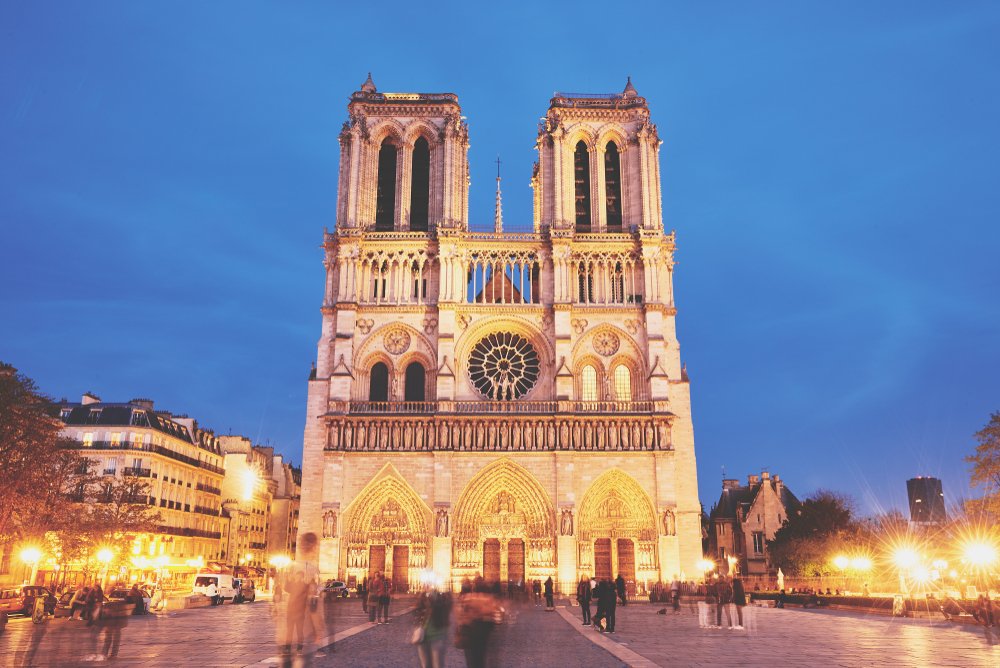
Hunchback of Notre-Dame
In 1831, Victor Hugo published a novel called "The Hunchback of Notre Dame". Hugo admired gothic architecture and art, and Notre-Dame inspired him to write a novel.
At the time, the cathedral was falling apart due to the damage it had suffered during the French Revolution. By choosing Notre-Dame as the central location of "The Hunchback of Notre-Dame", he emphasized the important role of the cathedral. This made more and more locals see Notre-Dame as a national monument and symbol of France. Hugo's novel, which acted as a cry for help, resulted in a massive restoration project of Notre Dame that began in 1841.
Disney Movie Vs. Real Story
The Hunchback of Notre Dame has inspired several films, including a 1996 Disney movie. While the plot of the Disney adaption is darker than in regular Disney movies, it is not as dark as it is in Hugo's original work. There are also differences in the personalities of some protagonists. Another major change made by Disney is that fewer characters die, which is understandable since it makes it more suitable for children.
Fun Fact: The ending of the Disney movie is inspired by an opera created by Victor Hugo himself.
Facts about Notre-Dame
Notre-Dame de Paris, an architectural masterpiece in Gothic style, is part of the World Heritage site of “Paris, Banks of the Seine” inscribed on the World Heritage List in 1991. The cathedral is one of the largest religious buildings in the whole world and one of the most visited tourist attractions in France.
In the following you will find some of the key figures behind Notre Dame de Paris at a glance.
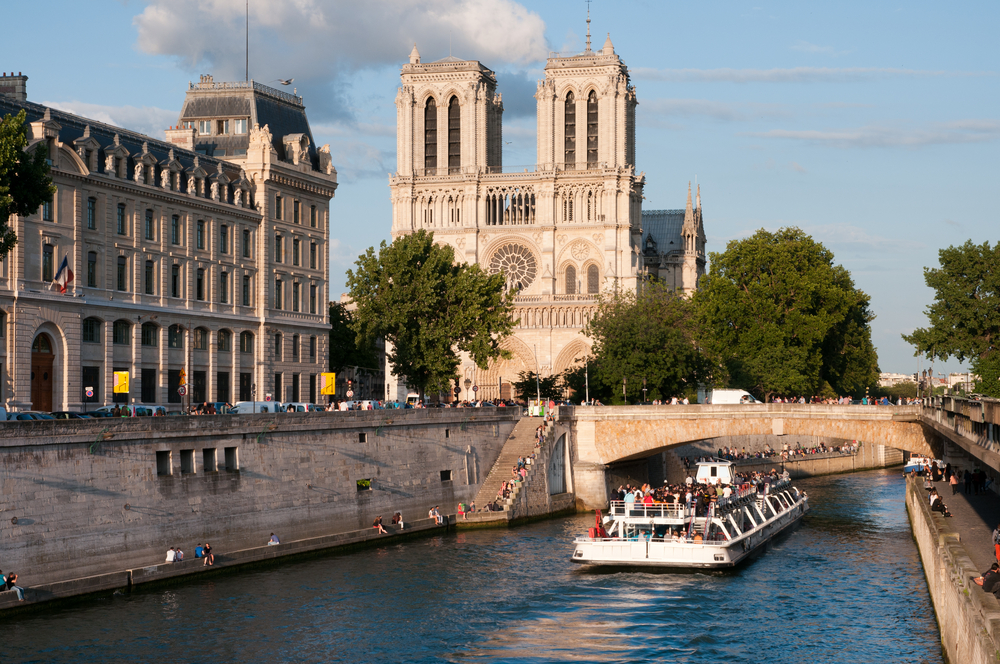
History of Notre-Dame
Notre -Dame Cathedral was built between 1163 and 1345. Since its inception, Notre-Dame has played a central role in French history. Its entire construction process lasted from 12th to 14th century when Paris was becoming a prominent capital city in the entire European continent and the Catholic Church. Its name means “Our Lady” and this medieval catholic church was consecrated in the name of Virgin Mary.
The religious monument has served as the scene of major events in history, like the coronation of Napoleon Bonaparte in 1804 and other kings, as well as royal weddings, popes’ visits and the funeral of Charles de Gaulle and other French presidents.
The three most important Periods
Contact Notre-Dame :
FAQ (Frequently Asked Questions)
Notre Dame Cathedral stands on the Île de la Cité in the 4th arrondissement of Paris. The address is: 6 Parvis Notre-Dame - Pl. Jean-Paul II, 75004 Paris, France
Notre Dame Cathedral was built between 1163 and 1345.
Notre Dame Cathedral is a catholic church. It was consecrated to the Virgin Mary.
The exact cause of the blaze is not known. French authorities believe that the devastating fire could have been started by an electrical fault or a cigarette.
Notre Dame is still closed. The restoration work is expected to be completed in spring 2024.
Nearly two years after the blaze that caused severe damage on Notre Dame, the cathedral is still closed. Start of the renovation work was delayed several times due to a number of challenges, including force winds that threatened the fragile structure and the strict Covid-19 lockdown on 17 March 2020. In addition, workers had to spend the first year after the devastating fire removing 200 tons of scaffolding and cleaning up dangerous lead residue released in the fire. Start of the restoration will begin once the lead cleaning is finished. Completion of the restoration works is planned by 2024.
Cathédrale Notre–Dame de Paris is the most iconic structure rising at the point zero of the city. Its name means “Our Lady” and this medieval catholic church was consecrated in the name of Virgin Mary.
Regarding its style, Notre Dame is a pioneer of the Gothic architecture in Europe. Its entire construction process lasted from 12th to 14th century when Paris was becoming a prominent capital city in the entire European continent and the Catholic Church.
If you would like to discover the area around the Notre Dame and this central island of Paris, check here our special content!

What to see at Notre Dame in Paris?
First of all, its facade with all the details on it mesmerize the viewer so one should not miss it. Usually the biblical characters covering the gates and all above the exterior walls. It is a gorgeous way of religious story telling, one of the best in the world especially from the middle ages.
The architecture of Notre Dame, of which construction started in 1160, was a precursor of Gothic style. The best technical parts you can observe about this development are the buttresses that you can observe while walking around the building.
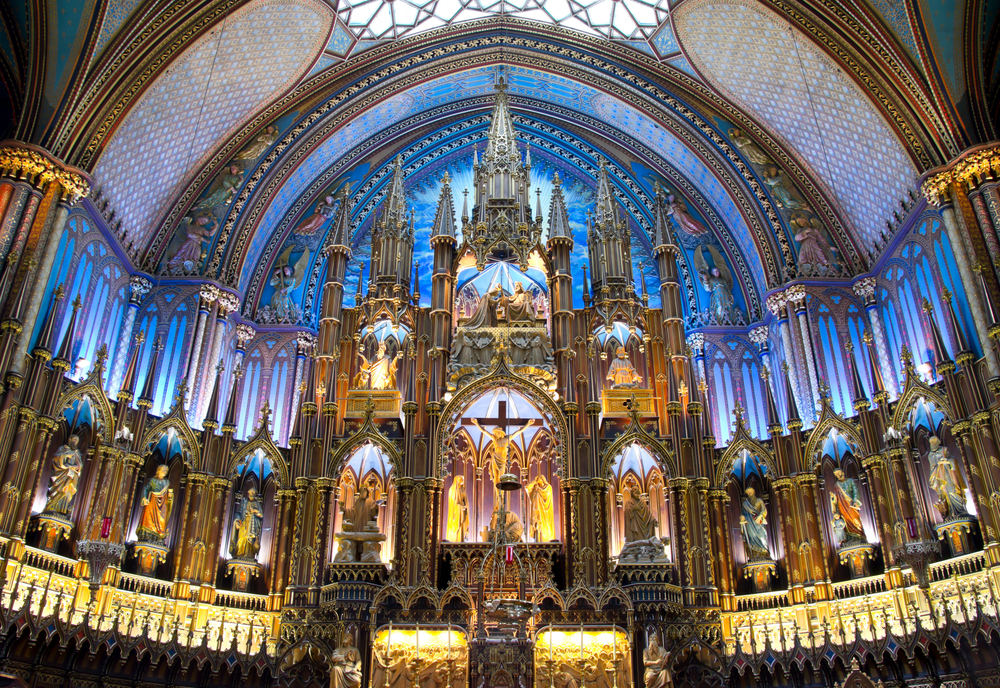
Considering the statues, the grotesque gargoyles like the monsters looking from the towers down to Paris is a classic image of this city. There is no doubt, the last big impact about the image of this monument was made by Victor Hugo and his classic novel.
Another celebrated piece of the Notre Dame is the stained glass roses.
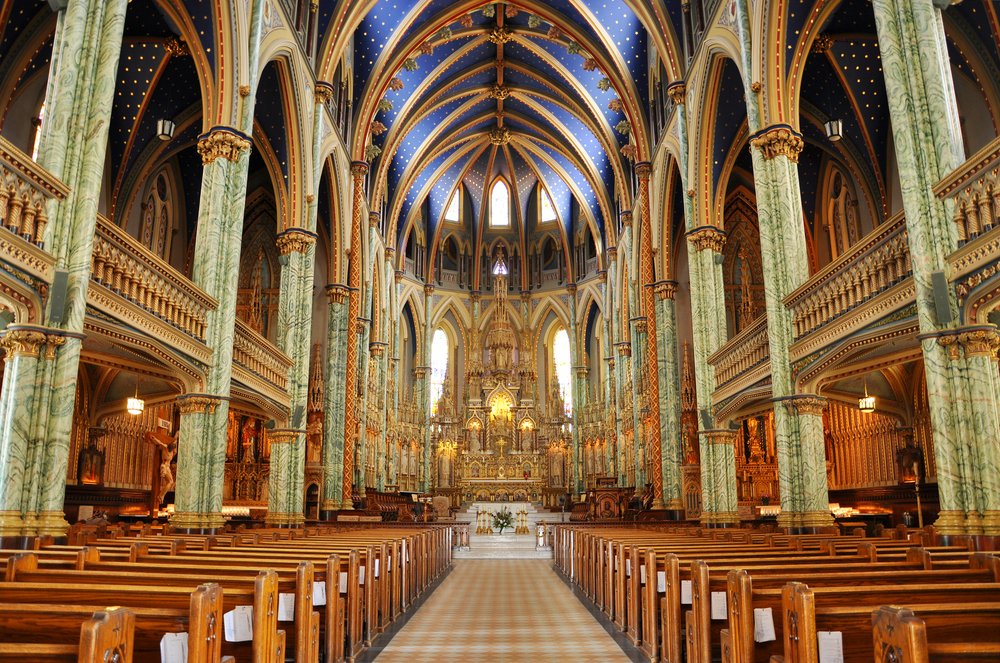
The Towers of Notre Dame de Paris
The most striking parts of this structure are its towers that were completed before 1250. They are 69 meters high and ten bells are gathered in the tower at the right hand side when you are looking towards the façade of the Notre Dame. The heaviest bell weighs around 13 tons that has been used for the biggest royal, religious or national events since the 15th century.
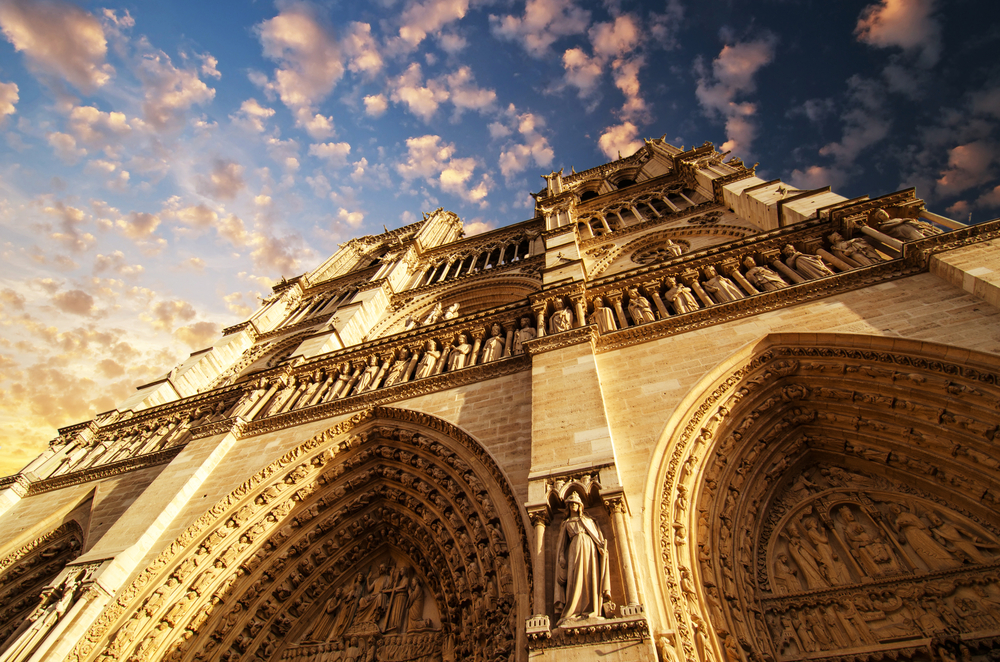
The Entrance to the Notre Dame Cathedral and its Towers
- Is the entrance of Notre Dame free?
- Is the Notre Dame Cathedral open?
- When Notre Dame will be reopened?
These two questions above are the most common ones from the travelers making plans about Paris. Before the unfortunate fire that destroyed the ceilings and spire, the entrance into the church was free. There was only a security check at the gates. Currently the building is still closed but the square in front of the Notre Dame was reopened in summer 2020.
The towers on the other hand was accessible only from the left when you are looking towards the cathedral. The ticket was costing €8.50 back then. All Paris lovers are waiting for the next available day to see the city from the top that looks like possible in 2024.
The interior of the cathedral and the towers will not be accessible for a few more years. Still, the twin bell towers of Notre Dame is greeting when the travelers having their first impressions of Paris.
